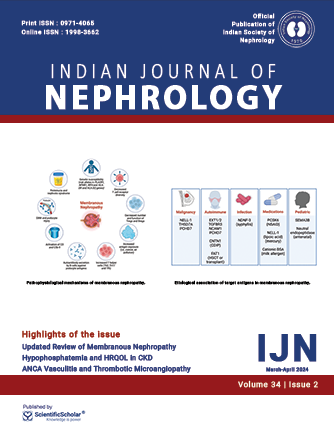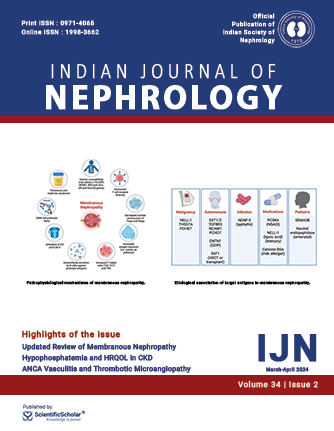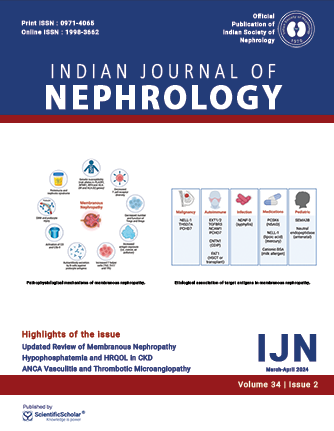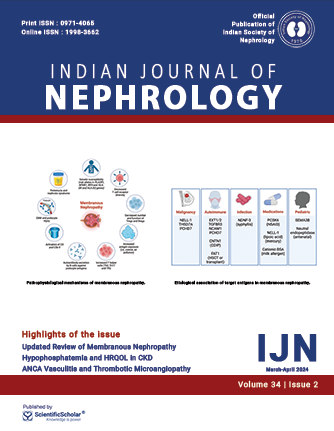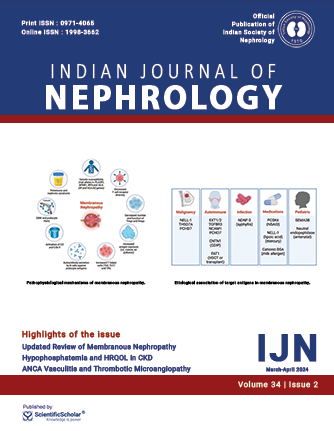© Copyright 2024 – Indian Journal of Nephrology – All rights reserved.
Published by Scientific Scholar on behalf of Indian Society of Nephrology.
Published by Scientific Scholar on behalf of Indian Society of Nephrology.
ISSN (Print): 0971-4065
ISSN (Online): 1998-3662












